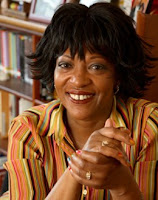
Prairie Dawn has recently begun to introduce nonfiction into her storytimes--we do 3/week: Toddlers, Family, and 4s &5s--and the kids are loving it! She recently did a turtles themed storytime which aside from the "aww!" factor of some of the photos of baby turtles, was great because the kids loved loved loved talking about turtles, sharing what they know, and asking questions. Introducing nonfiction:
- helps kids connect with their real surroundings
- broadens vocabulary by introducing new and more challenging words
- helps build up developing brains--new information gets taken in and stored in developing minds
- opens a door for great discussions with your young learners

According to Susan Canizares, PhD, in "Early Literacy: How to Introduce Nonfiction to Young Children:
 "Good nonfiction contains the essence of life--pieces of the "story"
about who we are, about the animals and plants with which we share our
inhabitance of the earth, and about how the world works, with all its
wonder and fascination. Good nonfiction helps build vocabulary. It also
fosters critical thinking and information-gathering skills. Good
nonfiction makes that real-world connection children need to grow and
learn. Here are some ways that you can integrate nonfiction meaningfully
into your classroom:
"Good nonfiction contains the essence of life--pieces of the "story"
about who we are, about the animals and plants with which we share our
inhabitance of the earth, and about how the world works, with all its
wonder and fascination. Good nonfiction helps build vocabulary. It also
fosters critical thinking and information-gathering skills. Good
nonfiction makes that real-world connection children need to grow and
learn. Here are some ways that you can integrate nonfiction meaningfully
into your classroom:

- Think aloud. After reading an information book
aloud, share what you found strange or interesting, what you liked, what
you want to know more about, and how you might go about getting the
information. Your model will inspire children's thinking.
- Don't worry if you don't have an answer. New information should always lead to the need to gather even more information. Children need to see you as a learner too.
- Integrate nonfiction and play.
Put a telephone book near a play phone, post a fine arts poster in the
art area, put a book about bridges or construction sites in the block
area. Not only are you helping children explore using real-life tools,
you are also exposing them to different kinds of informational print.
- Make your own nonfiction materials.
Every time you create a classroom chart or diagram with children, you
are generating an informational tool. When you make a class book about a
field trip exprience, you are doing the same. This acknowledges that
children are experts too. And experts share what they know. You can also
introduce children to the value of writing letters and conducting
interviews..." For the whole article.
 Prairie Dawn has recently begun to introduce nonfiction into her storytimes--we do 3/week: Toddlers, Family, and 4s &5s--and the kids are loving it! She recently did a turtles themed storytime which aside from the "aww!" factor of some of the photos of baby turtles, was great because the kids loved loved loved talking about turtles, sharing what they know, and asking questions. Introducing nonfiction:
Prairie Dawn has recently begun to introduce nonfiction into her storytimes--we do 3/week: Toddlers, Family, and 4s &5s--and the kids are loving it! She recently did a turtles themed storytime which aside from the "aww!" factor of some of the photos of baby turtles, was great because the kids loved loved loved talking about turtles, sharing what they know, and asking questions. Introducing nonfiction: According to Susan Canizares, PhD, in "Early Literacy: How to Introduce Nonfiction to Young Children:
According to Susan Canizares, PhD, in "Early Literacy: How to Introduce Nonfiction to Young Children: "Good nonfiction contains the essence of life--pieces of the "story"
about who we are, about the animals and plants with which we share our
inhabitance of the earth, and about how the world works, with all its
wonder and fascination. Good nonfiction helps build vocabulary. It also
fosters critical thinking and information-gathering skills. Good
nonfiction makes that real-world connection children need to grow and
learn. Here are some ways that you can integrate nonfiction meaningfully
into your classroom:
"Good nonfiction contains the essence of life--pieces of the "story"
about who we are, about the animals and plants with which we share our
inhabitance of the earth, and about how the world works, with all its
wonder and fascination. Good nonfiction helps build vocabulary. It also
fosters critical thinking and information-gathering skills. Good
nonfiction makes that real-world connection children need to grow and
learn. Here are some ways that you can integrate nonfiction meaningfully
into your classroom: 




Comments